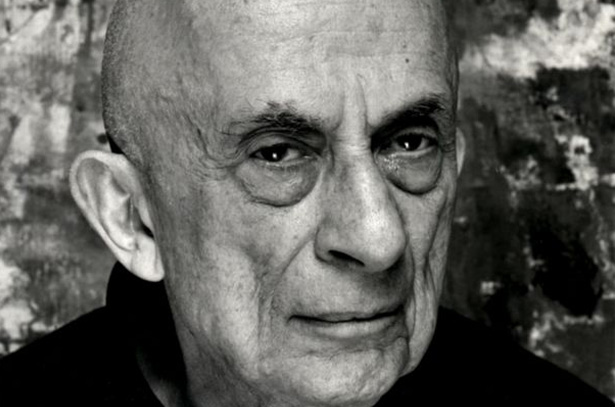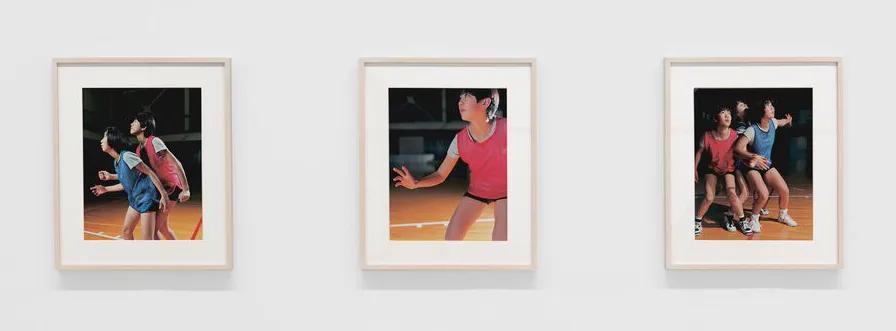Leon Golub
Et in Arcadia ego
Conceived by Rashid Johnson
5 September – 19 October 2024
‘To be an artist means to never avert one’s eyes’
–Akira Kurosawa
Leon Golub with Philip Guston, David Hammons, Rashid Johnson, Wifredo Lam, Sharon Lockhart, Robert Longo, Teresa Margolles, Tiona Nekkia McClodden and Taryn Simon
‘Et In Arcadia Ego’ takes the work of late American master Leon Golub (1922-2004) as a starting point to consider artists’ approaches to issues of conflict and uncertainty. Conceived by Rashid Johnson, this exhibition consists of a solo presentation of Golub’s paintings from the early 1950s to the late 1990s on the fifth floor of the gallery’s 22nd Street building, and a complementary group presentation of works in different mediums by international artists, including both Golub and Johnson himself, that spans the post-war period to the present day on the gallery’s second floor.

The title, ‘Et In Arcadia Ego,’ is taken from Golub’s 1997 painting ‘Time’s Up,’ in which the archaic Latin phrase is inscribed over an upturned skull. Referencing a classical masterwork by Italian Baroque artist Guercino (1591-1666), the words ‘et in arcadia ego’ are typically translated to mean ‘I too am in Paradise,’ with the ‘I’ referring to death. Golub, who first studied art history at the University of Chicago before serving as a cartographer of aerial reconnaissance maps in World War II, lived with his wife, artist Nancy Spero, in Italy from 1956-57. There they found lasting inspiration in Etruscan and Roman art, which Golub believed ‘represented cosmopolitan urban culture under stress’ in its focus on themes of authority and violence.
Excerpt from ‘Golub: Late Works Are The Catastrophes‘ (2004). Directed by Jerry Blumenthal and Gordon Quinn
Taken together, the works on the second floor invite expanded insights into the psychic and sociopolitical approaches Golub took in depicting uses and abuses of power. Among the artists Johnson chose for this presentation are Philip Guston (1913-1980), David Hammons, Wifredo Lam (1902-1982), Sharon Lockhart, Robert Longo, Teresa Margolles, Tiona Nekkia McClodden and Taryn Simon. The exhibition also includes text excerpts from such writers as Amiri Baraka/LeRoi Jones (1934- 2014), and Samuel Beckett (1906-1989)––prose that provides another entry point to the complexities of human nature expressed throughout the show.

True to Golub’s practice of collecting and archiving ephemera––slogans, graffiti, tattoos, news photographs and other publicly available imagery––from which to cull for his own compositions, the Latin phrase also suggests associations beyond classical sources.
Rashid Johnson describes such layered associations as the ‘radical juxtapositions’ and ‘proxy positionings’ that have long animated his interest in Golub’s oeuvre. Johnson remembers first experiencing the intensely visceral impact of scale and materiality in Golub’s work while exploring the collection of The Art Institute of Chicago as a student.
Johnson explains, ‘In looking back at the psychological condition of post-war sensibility, I think, as a contemporary African American artist, there are critical and philosophical parallels. I’m interestingly positioned to talk about the potentially transgressive and polarizing dynamic of experiencing a sense of tragedy while figuring out how to illustrate and navigate it.’
The fifth-floor gallery presents paintings that convey what Golub described as ‘a visual equivalent of how events effect themselves on bodies.’ The selection spans the artist’s career and his depictions of power, from internalized horrors of the Holocaust and heroism surrounding the atomic bomb to the manipulations of the Vietnam War and American interventions in South Africa and Central America in the 1980s.

Reframing Golub through what he calls a ‘kaleidoscopic unpacking,’ Johnson has selected works for the exhibition that reach across the Golub’s career, exploring both his aesthetic and thematic approaches to the dynamics of power and vulnerability. These include Golub’s forceful depictions of people from different backgrounds and his covert uses of masking—including the face itself as a mask—and what Johnson sees as Golub’s desire to create and occupy transitional space. In the complementary group exhibition of works by artist predecessors and successors in time, Johnson opens a visual conversation that serves to broaden the viewer’s understanding of Golub’s prodigious artistic and philosophical project.
About the Artist

Leon Golub
The complex dynamics of power, violence and politics pervade the breadth of Leon Golub’s paintings. Born in Chicago in 1922, Golub received his BA in Art History from the University of Chicago in 1942. Golub subsequently attended the School of the Art Institute of Chicago where he received his BFA and MFA in 1949 and 1950, respectively, after serving as an army cartographer in WWII.
In the late 1940s, Golub met the artist Nancy Spero (1926 – 2009) to whom he was married, and collaborated with variously, for nearly 50 years. During this time, Golub became involved with the Monster Roster Group: a post-war circle of artists based in Chicago and united by a shared fascination with surrealism, mythology and ancient art, systems of representation, and the politics of social critique. This early engagement, especially for its motion away from then dominant abstract modes of painting, informed the rest of Golub's career.
In 1950, Golub co-founded the event, ‘Exhibition Momentum,’ a confrontational response to the Art Institute of Chicago's banning of undergraduate submissions to its annual ‘Artists of Chicago and Vicinity’ exhibition. This recalcitrant form of activism proved typical for Golub, remaining a constant facet of his artistic career and personal life. Indeed, Golub was often called upon to lend his voice to political causes and artistic debate.
In the 1970s and 1980s, the subject matter of Golub's work pivots as his attention increasingly turned to diverse manifestations of terrorism: from the subversive operations of governments to urban street violence and corrupt dynamics of power. References to interrogations, war, torture and mortality repeatedly surface in these later works, as Golub tackles themes of violent aggression, racial inequality, gender ambiguity, marginalization, oppression and exclusion.
From the 1990s until his death, Golub experimented with a greater illusionism: often appropriating graphic styles from ancient carvings, medieval manuscripts and contemporary graffiti.
Current Exhibitions
1 / 11


































